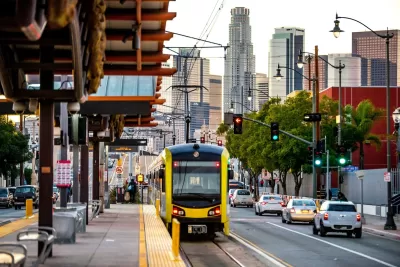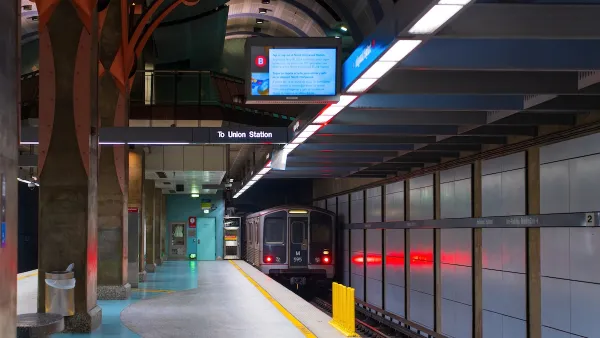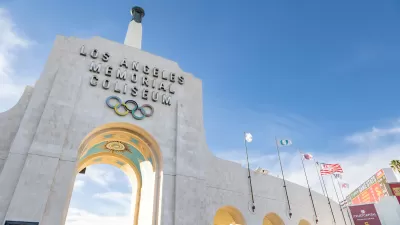Rail and bus ridership in the Los Angeles metropolitan area is recovering at a faster rate than the national average.

L.A. Metro averaged more than 1 million weekday riders for the first time since before the pandemic last month, according to an article from local news outlet KNX News. The milestone marks the 22nd consecutive month of year-over-year ridership growth. The announcement comes as transit ridership has lagged behind pre-pandemic levels in major cities across the country.
The article goes on to report that L.A. Metro’s combined bus and rail ridership reached 86.4 percent of its September 2019 pre-pandemic records, which exceeds the nationwide transit average of 76 percent of pre-pandemic levels. When divided between weekdays and weekends, Metro boardings stood at 83.6 percent and 96.9 percent of September 2019 levels respectively.
One of the driving factors in the sluggish ridership recovery is shifting work patterns (e.g., increase in remote work), as well as service cuts due to funding and staffing challenges. But all modes are not struggling, or recovering equally. According to a April article from Smart Cities Dive, bus transit has recovered faster nationwide, having reached 81 percent of 2019 ridership as of December 2023, while commuter rail has lagged at 65 percent. According to the KNX News article, L.A. Metro is bucking that trend, with commuter rail boardings increasing 10 percent in September 2024 compared to September 2023 versus 6.9 percent for bus boardings.
FULL STORY: Metro reaches milestone of 1M weekday riders

Planetizen Federal Action Tracker
A weekly monitor of how Trump’s orders and actions are impacting planners and planning in America.

Restaurant Patios Were a Pandemic Win — Why Were They so Hard to Keep?
Social distancing requirements and changes in travel patterns prompted cities to pilot new uses for street and sidewalk space. Then it got complicated.

Map: Where Senate Republicans Want to Sell Your Public Lands
For public land advocates, the Senate Republicans’ proposal to sell millions of acres of public land in the West is “the biggest fight of their careers.”

Maui's Vacation Rental Debate Turns Ugly
Verbal attacks, misinformation campaigns and fistfights plague a high-stakes debate to convert thousands of vacation rentals into long-term housing.

San Francisco Suspends Traffic Calming Amidst Record Deaths
Citing “a challenging fiscal landscape,” the city will cease the program on the heels of 42 traffic deaths, including 24 pedestrians.

California Homeless Arrests, Citations Spike After Ruling
An investigation reveals that anti-homeless actions increased up to 500% after Grants Pass v. Johnson — even in cities claiming no policy change.
Urban Design for Planners 1: Software Tools
This six-course series explores essential urban design concepts using open source software and equips planners with the tools they need to participate fully in the urban design process.
Planning for Universal Design
Learn the tools for implementing Universal Design in planning regulations.
Heyer Gruel & Associates PA
JM Goldson LLC
Custer County Colorado
City of Camden Redevelopment Agency
City of Astoria
Transportation Research & Education Center (TREC) at Portland State University
Camden Redevelopment Agency
City of Claremont
Municipality of Princeton (NJ)





























